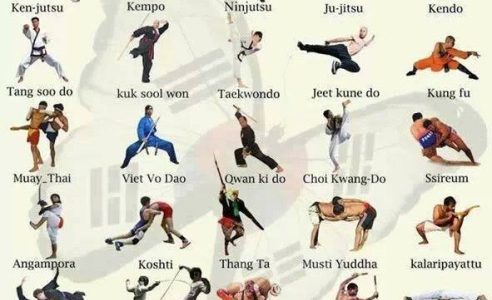How Does The Concentrate On Technique In Traditional Martial Arts Comparison With The Affordable Facet Of Modern-Day Battle Sports? Learn More About The Important Differences That Can Assist Your Development
How Does The Concentrate On Technique In Traditional Martial Arts Comparison With The Affordable Facet Of Modern-Day Battle Sports? Learn More About The Important Differences That Can Assist Your Development
Blog Article
Post Writer-Skovbjerg Hovgaard
When you consider martial arts, do you lean a lot more towards the typical techniques or the modern-day combat sporting activities? Each course provides distinct advantages and experiences, formed by their ideologies and training approaches. go to website stress individual growth and discipline, while contemporary battle sports focus on competitors and efficiency. Recognizing these differences can guide you in selecting the ideal approach for your journey. However just how do kempo martial arts manifest in training and ideology?
The Philosophy and Background Behind Conventional Martial arts
While many individuals associate martial arts with physical combat, the viewpoint and history behind conventional martial arts run much deeper. You'll locate that these disciplines stress individual growth, discipline, and regard.
Originating from old methods, typical martial arts were commonly developed for Self-Defense and spiritual advancement. They personify principles such as equilibrium, harmony, and self-discipline, leading professionals past mere fighting abilities.
As you educate, you'll not just find out strategies however also gain understandings into the society and worths that shaped these arts. The rituals and customs, typically given through generations, promote a feeling of area and belonging.
The Affordable Nature of Modern Fight Sports
Modern combat sports have transformed the landscape of martial arts into an extremely affordable arena, where professional athletes face off in a test of skill, strategy, and endurance.
You'll see that competitions are typically arranged with strict policies and policies, making sure justice and security. These occasions bring in large target markets, fueling the enjoyment and strength of matchups.
Professional athletes educate rigorously, not just for physical expertise yet also for mental strength, knowing that every detail counts in the ring. The adrenaline rush during competitions is palpable, as competitors push their limits to claim victory.
Fans value the athleticism and creativity involved, making modern combat sports a thrilling phenomenon that remains to evolve and captivate enthusiasts all over the world.
Training Techniques and Techniques: A Relative Analysis
The competitive environment of contemporary combat sports demands innovative training methods that differ dramatically from standard martial arts.
In modern training, you'll focus on particular strategies, sparring, and conditioning, commonly utilizing drills that imitate real battle situations. You'll see a focus on measurable performance and constant competition to evaluate your skills.
In https://sunnewsonline.com/sexual-violence-over-100-girls-trained-in-martial-arts-other-skills-in-lagos/ , conventional martial arts focus on forms, katas, and thoughtful teachings, usually stressing discipline and regard over competitors.
Training is usually less intense and may involve repetitive method rather than real-time sparring.
While both techniques build skill and physical fitness, modern-day battle sporting activities offer a more dynamic and versatile training environment, preparing you for immediate difficulties in the ring or cage.
Choose the path that straightens with your goals and interests.
Conclusion
In selecting in between typical martial arts and modern combat sporting activities, it really comes down to what you value a lot of. If you're searching for individual development, self-control, and a sense of community, conventional arts might be your ideal fit. Yet if you flourish on competition and real-time challenges, modern-day combat sports could be the means to go. Inevitably, both paths provide one-of-a-kind advantages, so it's everything about straightening your training with your personal objectives and rate of interests.
